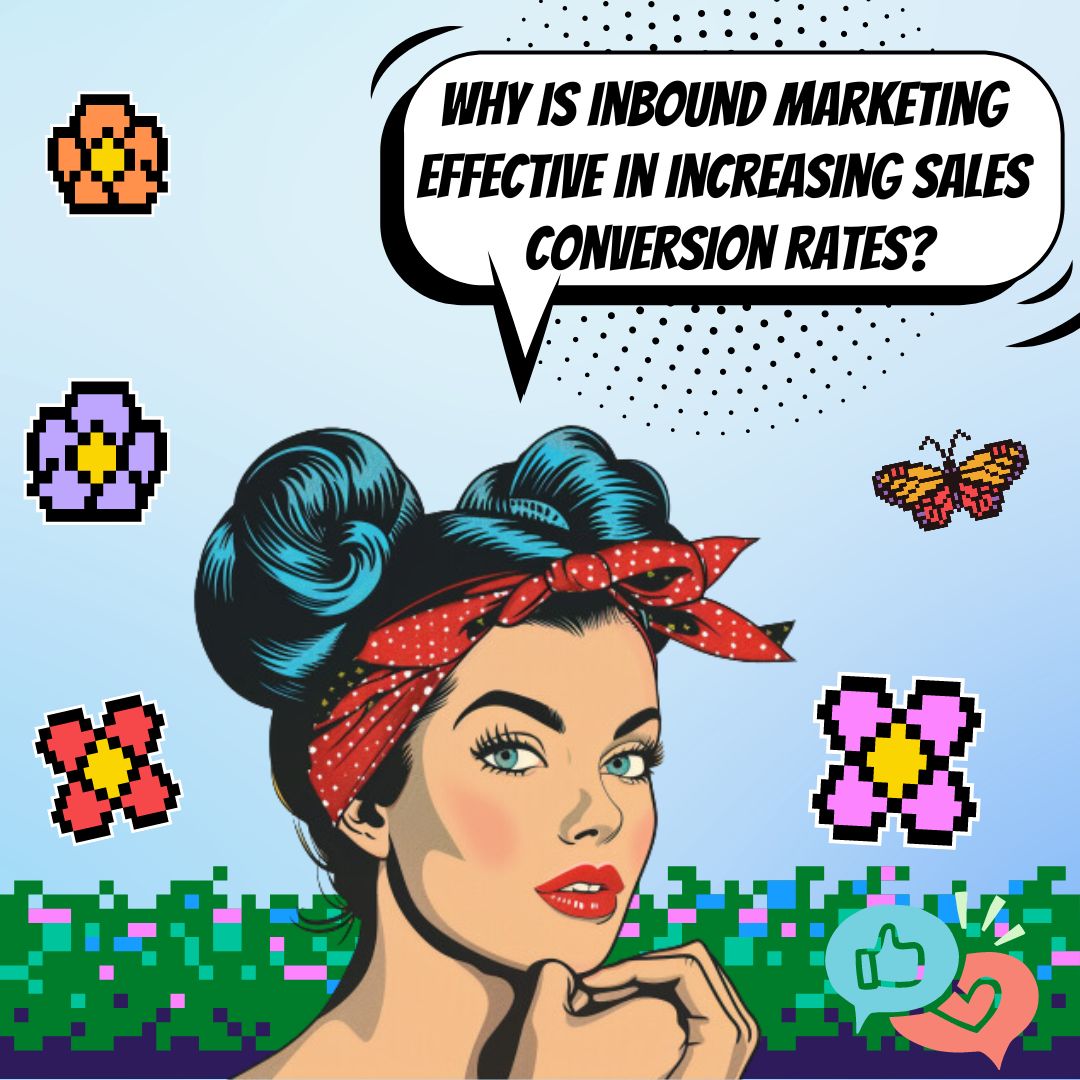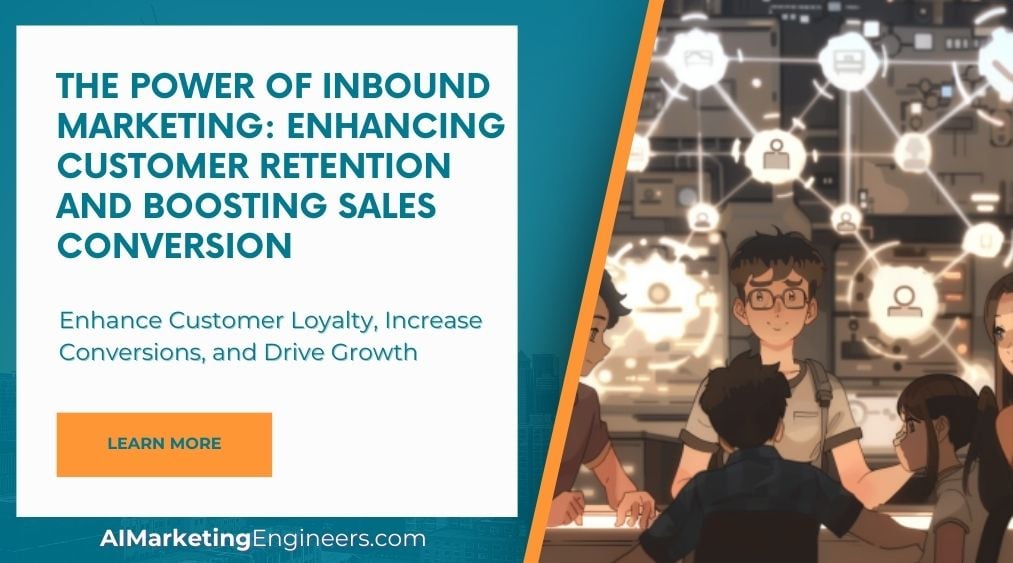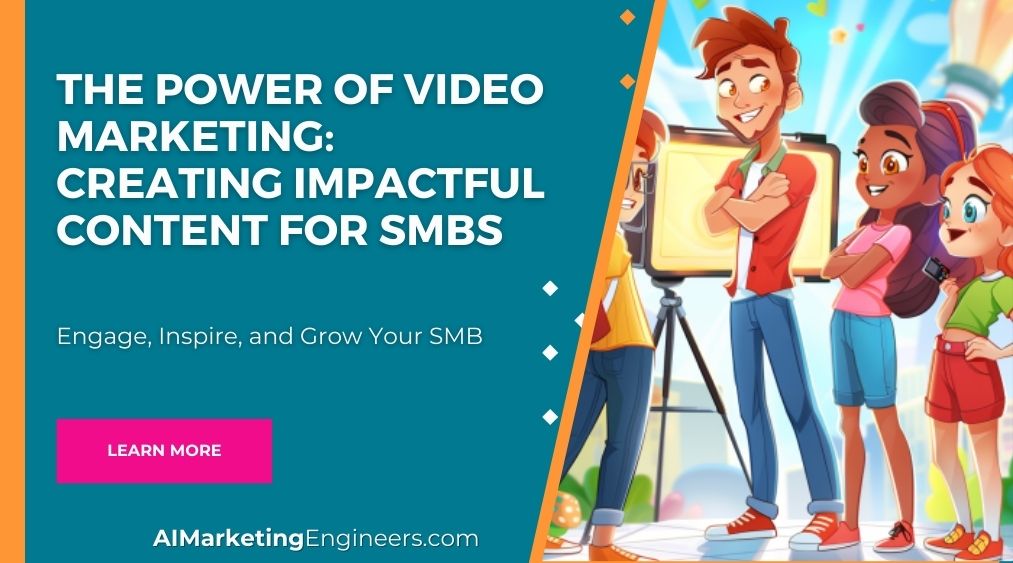Key Takeaways
✅ Personalization and Exclusive Content: Cultivate deeper customer relationships through personalized engagement and content exclusives. Whether it's through targeted emails or tailored offers, personal touches can increase customer loyalty and revenue.
✅ Optimizing Conversion Rates: Learn how to turn visitors into buyers by refining your website's landing pages, implementing A/B testing, and streamlining user experience to encourage the desired actions and boost conversions.
✅ Understanding Customer Journey and Lead Nurturing: Synthesize insights from the buyer’s journey to provide impactful content at every stage. Develop lead nurturing programs that not only convert prospects into customers but also promote brand advocacy and repeat business.

Introduction
Are you harnessing the power of inbound marketing to its full extent to keep your customers coming back for more while also closing more sales? In today's world, where every click could lead to a potential sale or a lifelong customer, the significance of crafting a strategy that aligns with customer retention and sales conversion cannot be overstated. But are you striking the right chord with your audience? As businesses compete for not just the attention but the hearts of their prospects, understanding the nuances of inbound marketing could mean the difference between fleeting engagements and sustained success. This article is your compass to navigate the realm of inbound marketing, where customer experience takes center stage, and every interaction is an opportunity for growth. Get ready to explore insights that could redefine the way you connect with your audience and measure success. Prepare for the best-kept secrets of inbound marketing that are guaranteed to give you an edge in this cutthroat marketplace.
Top Statistics
| Statistic | Insight |
|---|---|
| Inbound practices produce 54% more leads than traditional outbound practices. | This indicates the efficiency and impact of adopting inbound strategies for businesses looking to increase their lead generation. |
| Content marketing costs 62% less than traditional marketing and triples the leads. | By focusing on content marketing, brands can significantly reduce costs while multiplying their opportunities to connect with potential customers. |
| Inbound leads cost 61% less than outbound leads. | This statistic sheds light on the cost-effectiveness of inbound marketing, underlining its potential for a high return on investment (ROI). |
| 82% of marketers who blog see positive ROI for their inbound marketing. | Blogging proves to be a powerful tool, not just for engagement but also for driving tangible business returns. |
| SEO leads boast a 14.6% close rate, while leads sourced from outbound marketing fall short with a close rate of 1.7%. | Investment in SEO is not just about visibility, it's about closing deals and winning business, far outpacing traditional methods. |
The Power of Inbound Marketing
Imagine you're strolling through a market – rather than being hounded by aggressive salespeople, you're pleasantly surprised when a helpful individual offers you insightful advice, guiding you towards a product you actually need. That's inbound marketing in a nutshell. It's the art of creating a magnetic pull towards your brand through valuable content, without being pushy or disruptive.
Why Customer Retention Matters
Now, let's talk numbers. Did you know that bumping up customer retention by a mere 5% can hike your profits anywhere from 25% to a staggering 95%? That's right, fewer costs in chasing new clients and more money in your pocket. It’s not just about clinching that sale; it’s about keeping those buyers coming back for more. That's how you pump up the customer lifetime value.
Inbound Marketing Strategies for Customer Retention
A personal touch can go a long way. Personalization, from recommendations to tailored emails, can make customers feel at home with your brand. Combine this with quick, caring customer service, and you're not just solving problems, you're building a fortress of trust. Don’t forget to sprinkle in some enticing loyalty programs. These can transform one-time shoppers into lifelong fans.

Converting Leads to Customers
Bringing a lead into the fold is like nurturing a budding relationship. Through lead nurturing, you guide potential prospects down the path to purchase with insightful content and helpful information. Keep your eyes on lead scoring too – if you know who's ripe for the buying, you can target your efforts effectively. And always track your interactions, so that you’re not throwing darts in the dark but making strategic moves to boost conversions.
Delighting Customers
Ever had a company go out of its way to solve your problem? That’s exceptional service, and it’s memorable. Creating that standout experience keeps customers singing your praises. Engage with them thoughtfully, through tools like chatbots and social media, to stay connected and attentive to their needs. Who doesn't love a brand that listens? Ultimately, this leads to creating brand advocates – customers who do the marketing for you.
Measuring Success
The game of marketing is won with clear and actionable insights. You need to be a hawk, monitoring metrics such as growth, engagement, and – crucially – the value a customer brings throughout their relationship with your company. Regular reporting lays bare the impact of your marketing strategies and provides the clarity needed to make thoughtful adjustments. After all, what's progress if you can't measure it?
Each of these components plays a critical role in bringing the inbound methodology to life, securing not just a first-time sale but nurturing a continuous buying journey that benefits both the business and the consumer.

AI Marketing Engineers Recommendation
Recommendation 1: Utilize Personalized Content to Boost Engagement: Tailoring your content to meet the specific needs and interests of your audience can significantly improve customer retention rates. According to a survey by Epsilon, 80% of consumers are more likely to make a purchase from a brand that provides personalized experiences. To harness The Power of Inbound Marketing, begin by segmenting your audience based on their behavior, then create and distribute personalized content such as targeted email campaigns, customized product recommendations, and relevant blog posts that cater to each segment's preferences.
Recommendation 2: Leverage Social Media Listening for Customer Insights: Social media isn't just a broadcasting platform; it's a two-way conversation. By engaging in social media listening, you can gain insights into what your audience is saying about your brand and industry. This is crucial for Enhancing Customer Retention because it allows you to respond quickly to feedback, adjust strategies in real-time, and address pain points before they escalate. Currently, brands that engage with customer service requests via social media see a 20-40% increase in customer spending with that company (source: Bain & Company). Implement social media listening tools and train your team to analyze the data to inform your marketing and sales strategies.
Recommendation 3: Adopt Marketing Automation for Consistent Communication: Automated marketing systems are not just timesavers, they also ensure consistently targeted communication with your prospects and customers, contributing to Boosting Sales Conversion. With an automation tool like HubSpot or Marketo, businesses can deliver timely, relevant content and nurture leads through the sales funnel. Statistics show that companies using marketing automation for nurturing prospects experience a 451% increase in qualified leads (source: Annuitas Group). By setting up automated email workflows that trigger based on user actions, you'll maintain a steady line of communication and subtly encourage repeat business and referrals.
Relevant Links
- Engage the Chinese Market: Mastering WeChat for Inbound Marketing Success
- Ride the Viral Wave: Douyin and Kuaishou Strategies Unveiled
- Building Brand Loyalty: How Personalization Wins Repeat Customers
- Transform Leads into Sales: Lead Nurturing Tactics That Work
- Exceed Expectations: Service Strategies for Creating Brand Advocates
Conclusion
Understanding inbound marketing is more than just grasping a method; it's about embracing a philosophy that places the customer experience at the forefront. This approach isn't just a feel-good strategy; it's a wise financial move. Why does customer retention matter so much? Because the numbers speak for themselves: with up to a 95% potential increase in profits stemming from just a 5% hike in customer retention, the investment in inbound strategies is not just prudent—it's paramount.
Personalization and quality customer service are critical components of inbound strategies that retain customers. By tailoring a shopping experience that feels thoughtful and personal, and delivering customer service that listens and solves, businesses build loyalty organically. And let's not forget the essential role of loyalty programs, which cleverly accelerate purchase frequency and turn customers into community ambassadors.
But retention is only part of the journey. Converting leads to customers remains a cornerstone of inbound marketing. Effective tools like lead nurturing, scoring, and customer tracking must be skillfully deployed to ensure that leads become part of the family. The ultimate goal is to delight customers to such an extent that they become fervent supporters of your brand, offering free advertisement and genuine advocacy.
In closing, the art of measuring success is in regularly monitoring your metrics and adjusting your strategies accordingly. Remember that every tweet, every post, and every customer interaction, is an opportunity to advance your business. Now, think about your own inbound marketing efforts. Are you truly engaging your audience in a meaningful conversation? Are they excited to be part of your brand's story? You have the tools to not only answer these questions but to shape the narrative in your favor, bolstering your sales conversion and securing customer loyalty for the long haul.

FAQs
Question 1: What is inbound marketing?
Answer: Inbound marketing is a way of reaching out to people by providing them with valuable content and experiences tailored to them. It's about drawing customers in through relevant and helpful content and adding value at every stage in your customer's buying journey.
Question 2: What is the difference between inbound and outbound marketing?
Answer: The main difference is how you connect with your audience. Outbound marketing is the traditional method – think ads, cold calls, and mass emails, where you're pushing your message out. Inbound marketing is more like a magnet, pulling interested people towards your business by creating content they're actively searching for.
Question 3: What are the key channels used in inbound Markeitng?
Answer: The key channels include things like blogs, search engines, and social media – essentially anywhere you can share content that your audience will value and engage with.
Question 4: How does inbound marketing enhance customer retention?
Answer: It's all about keeping the conversation going. With inbound marketing, you're not just closing a sale, you're starting a relationship. By continuing to offer worthwhile content and support even after they've bought something, you're showing customers they matter, which keeps them coming back.
Question 5: What is the role of content in inbound marketing?
Answer: Content is king in the world of inbound marketing. It's the foundation that holds everything together. By sharing your knowledge and expertise through content, you help solve people's problems – and that's what draws them into what you have to offer.
Question 6: How does inbound marketing boost sales conversion?
Answer: Inbound marketing is like a trusted friend – when you get advice or recommendations from someone you trust, you're more likely to follow through. By building trust with your audience through valuable content, you're also building credibility, which makes people more likely to choose you when they're ready to buy.
Question 7: What are the first steps in creating an inbound marketing campaign?
Answer: You'll want to take a look at what you're already doing that might be considered inbound. Get your team together, see what's working and what's not, set clear goals, and come up with a game plan that'll nudge you closer to those goals.
Question 8: How long does it take to see results from inbound marketing?
Answer: It's not an overnight thing; it's more of a slow and steady wins the race kind of deal. Think about 9-12 months to really start seeing the fruits of your labor. You're building your reputation and authority, and that takes time.
Question 9: What is the importance of measuring KPIs in inbound marketing?
Answer: Measuring KPIs is how you know if you're on the right track. It's like your GPS for marketing – without it, how will you know if you're moving closer to your destination or just wandering around?
Question 10: How can inbound marketing be integrated with other marketing strategies?
Answer: Inbound marketing plays well with others. It can be the yin to outbound marketing's yang. For instance, you can get the word out with a splashy outbound campaign and then nurture those leads with the meatier, more engaging content that's the hallmark of inbound marketing.

Academic References
- Royo-Vela, M., & Hünermund, U. (2016). Inbound marketing: Enhancing brand equity through content creation and interactive tools. Journal of Brand Management, 23(3), 288-302. This study investigates how inbound marketing practices, such as content creation and interactive tools, can bolster brand equity within higher education. The research underscores the need to fathom both the prospective market and the current consumer base as a means of solidifying a brand's standing.
- Duguleana, L., & Duguleana, O. (2008). Inbound marketing and its impact in the digital era. Marketing Management Journal, 18(3), 95-112. The article delves into the growing significance of inbound marketing amidst the digital revolution. The authors delve into how creating valuable content and experiences can forge a deep-rooted connection with potential customers, ultimately cultivating trust and allegiance.
- Patil, V.S., & Bhakkad, D.D. (2014). Redefining marketing management: The role of inbound marketing. Marketing Review, 20(4), 397-413. This comprehensive study emphasizes the transformative impact of inbound marketing on customer relations and management practices. It accentuates how tailoring marketing strategies to align with consumer needs and anticipations can foster enduring connections.








